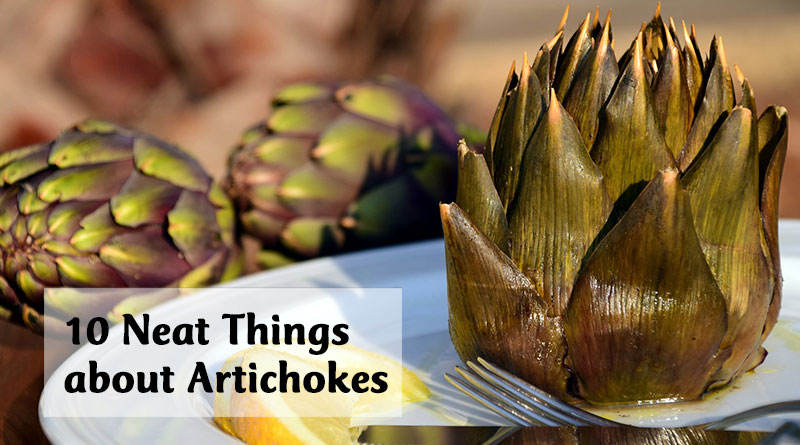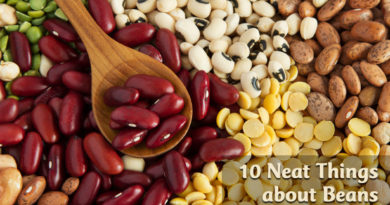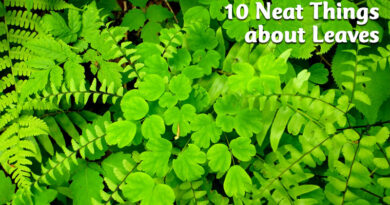About Artichokes

1. Eating flower babies.
An artichoke is the bud of the flowerhead of Cynara scolymus, a plant with lovely violet-blue flowers that look just like those of a Scottish thistle. Artichoke flowers, however, are much larger and can measure seven inches in diameter. The plant can grow to six feet wide and up to 10 feet tall if left to its own devices. In full bloom, artichokes look too pretty to eat, but closed, with the immature bud just ready to burst into flower, they have been irresistible to epicures for more than 2,000 years. The perennial will only grow in the warmest parts of Canada and with frost protection. And patience.
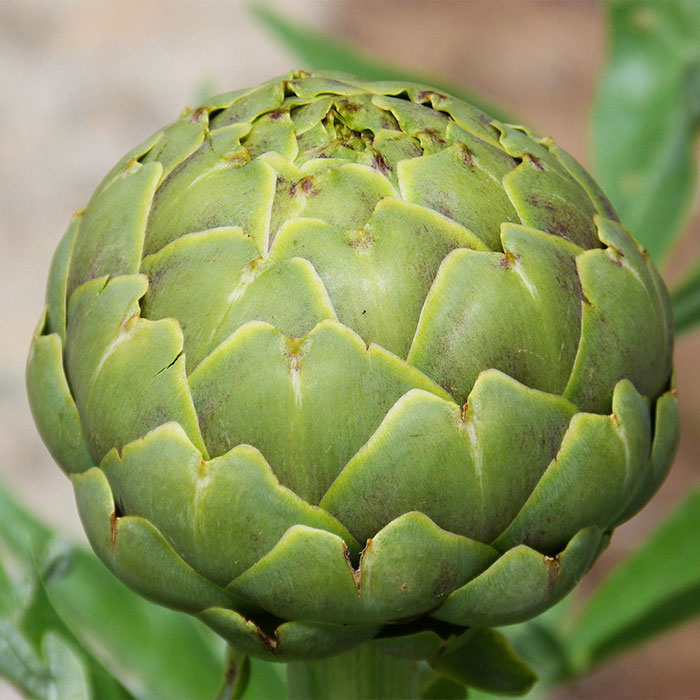
2. Beloved by Greeks and Romans.
Artichokes were mentioned in both Greek and Roman literature. The Greek Theophrastus (371-287 BC) wrote about the glories of artichokes during the latter part of his life. The Roman Pliny the Elder called them “one of earth’s monstrosities”, even though he loved to eat them pickled in honey, cumin and vinegar.
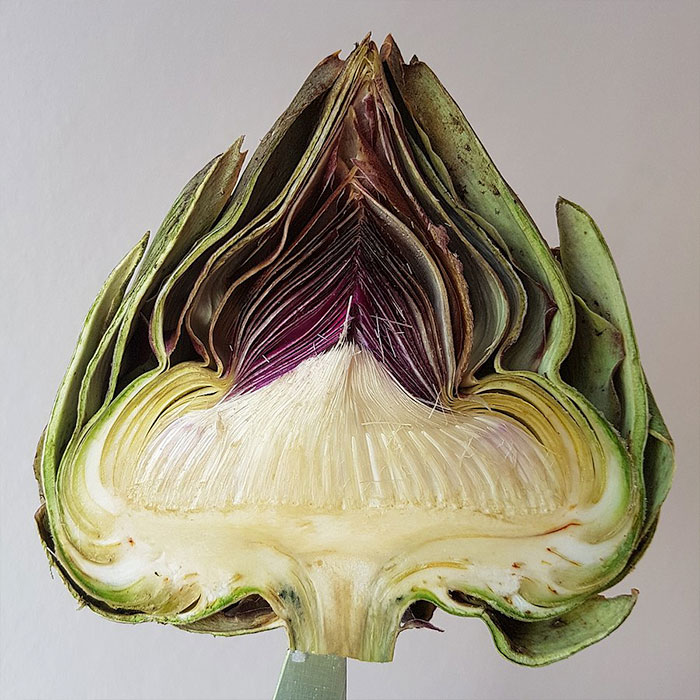
3. Titillate a lover: eat an artichoke.
Dr. Bartolomeo Baldo wrote of the artichoke in 1586, “It has the virtue of provoking Venus for both men and women; for women making them more desirable and helping the men who are in these matters rather tardy.” The naughty Catherine de Medici, wife of France’s King Henry II, ate them often and publicly.

4. Only for men, like that other Henry.
Artichokes were expensive in the Middle Ages and were often denied to women. Considered aphrodisiacal, they were reserved for men who desired them to add to their virility. Henry VIII of England had them in his garden to aid his libido and sustain his many amours.
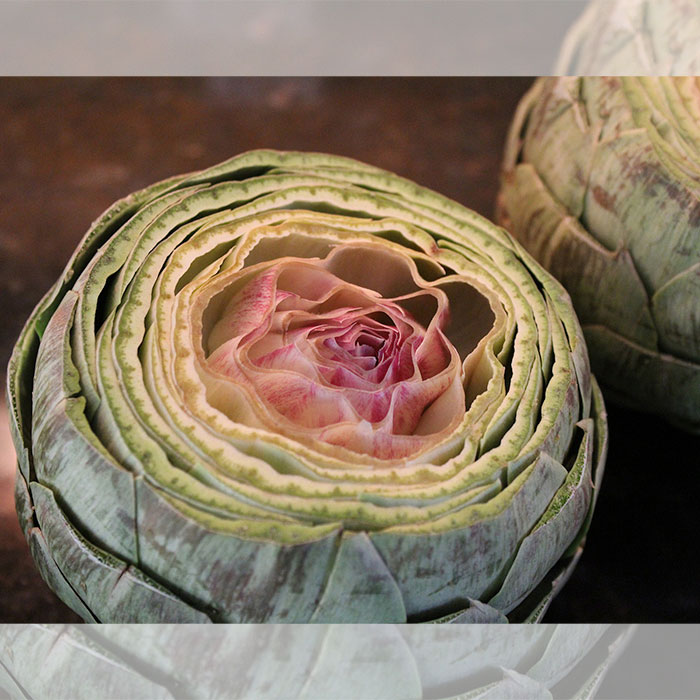
5. American delight.
The French brought artichokes to New Orleans, but it was the Spanish who brought them to California where they settled in with great comfort. Martha Washington even included them in her cookbook, where she tells how to make “Hartichoak Pie”.

6. The artichoke wars of New York City.
Artichokes continued to win American converts. They were much desired and very expensive, so in the 1920s, one Ciro Terranova, a.k.a. “Whitey”, decided to cash in on this. He tried to corner the artichoke market by buying up all the New York stock then terrorizing distributors and merchants and sending mobsters to destroy the crops of those not in his thrall. The mayor of New York City, Fiorello La Guardia, was so upset, he declared the sale, display and possession of artichokes illegal. Unfortunately, he liked artichokes so much himself that he caved in after only one week and lifted the ban.
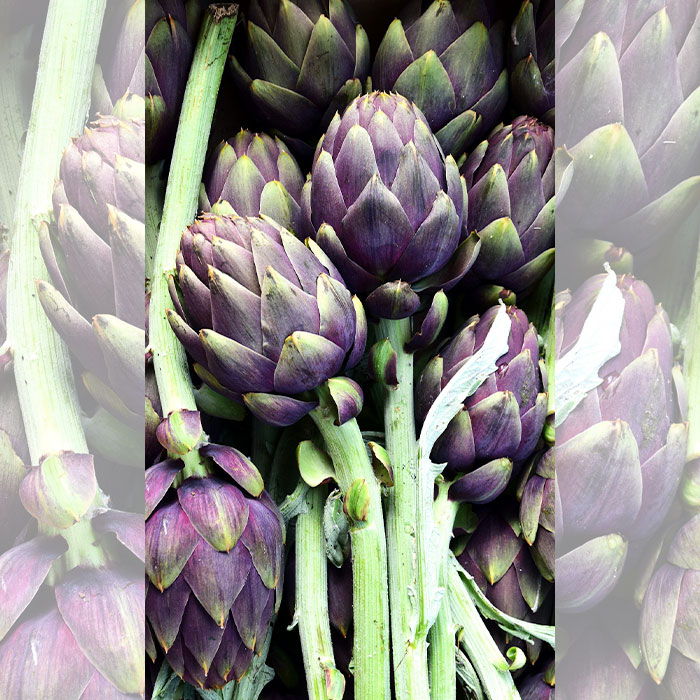
7. How the artichoke launched a career.
A pretty young model, Norma Jean Baker, who had adopted the glamorous name, Marilyn Monroe, was crowned the very first Miss California Artichoke Queen in 1947, in a town called Castroville. Three-quarters of the artichokes grown in the United States are grown in Castroville, which is 98 miles south of San Francisco.
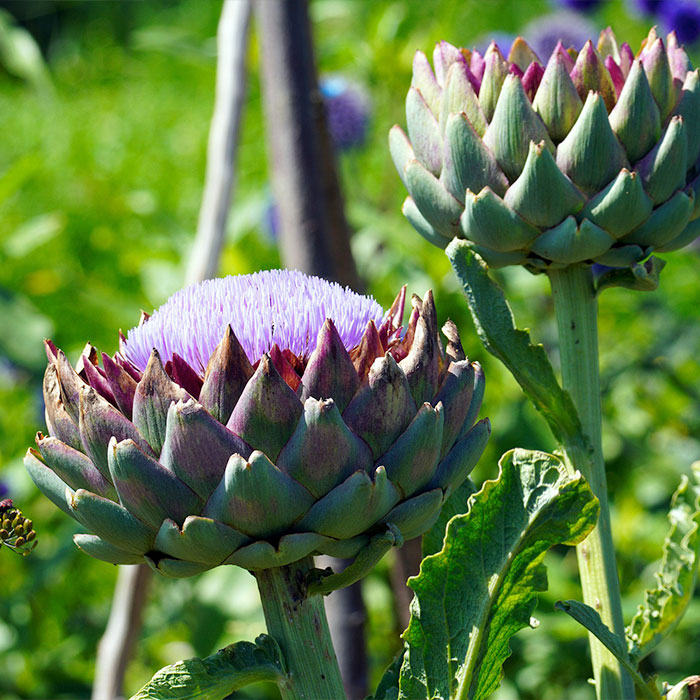
8. Undeniable attraction.
Aside from the mythical (and not substantiated) aphrodisiacal properties, what is it about artichokes that makes people so devoted? We know that they are indeed an appetite stimulator, so they are not a good vegetable for those on a diet. We know that they often leave a sweet aftertaste and that they are incompatible with wine, which is a huge strike against them. Yet we still don’t know why they are so addictive. Still, they are delicious and maybe that’s all we need to know.
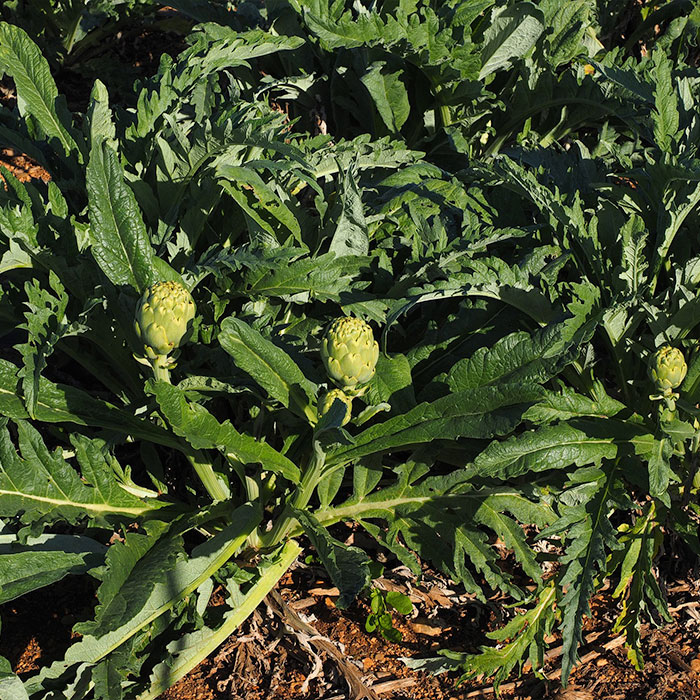
9. Chockful of goodies.
As far as healthy eating goes, artichokes are at the top of the list. A typical artichoke contains only 60 calories, but that includes four grams of proteins, six grams of fibre, plenty of vitamins A, B, and C and folic acid. They are also well endowed with calcium, magnesium, iron, potassium and even zinc. Their antioxidant properties are well documented thanks to their healthy measure of cynarin and silymarin, and they help the liver to regenerate cells. In Turkey, artichokes were used as a diuretic, a blood cleanser and a cure for hepatitis, thanks to their excellent effect on the liver.
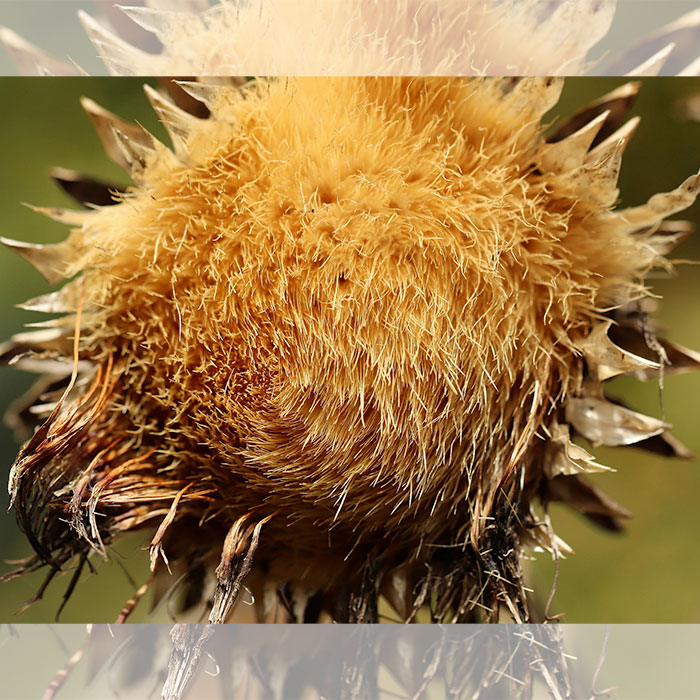
10. Eat your heart out.
How do you eat an artichoke? It’s a real, well, art. First the cook has to cut off the top of the bud, then remove any tough outer bracts or leaves, being careful to cut off any spiny parts on the leaves remaining. Then they can be boiled, steamed, deep fried with or without batter and eaten with hollandaise, vinegar, lemon juice or aioli. You peel off the leaves one by one, between top and bottom teeth, stripping them of their juicy parts and discarding the tough parts. Then, when you get to the fuzzy, spiny part in the middle (the choke), scoop this out and reject. Now you get to the real prize, the heart, which is totally delicious and worth every bit of all that hard work.
– Dorothy Dobbie Copyright©
Pegasus Publications, Inc.

